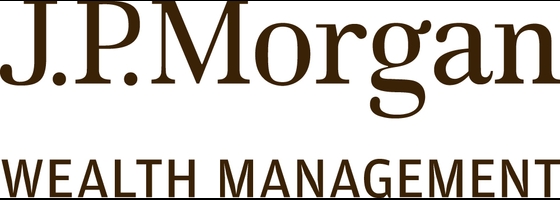- Income potential
- Relatively low risk
- Downside protectionOpportunity risk
What is a covered call? Pros, Cons, Strategy


Our evaluations and opinions are not influenced by our advertising relationships, but we may earn a commission from our partners’ links. This content is created by TIME Stamped, under TIME’s direction and produced in accordance with TIME’s editorial guidelines and overseen by TIME’s editorial staff. Learn more about it.
An option is a contract to buy (in the case of a call option) or sell (in the case of a put option) an underlying stock or other asset at an agreed-upon price (the "strike price") on or before the expiration date. While there are countless ways to trade options, a covered call is one of the most basic strategies—and one of the least risky.
A covered call is when you sell (or "write") a call option on a stock you already own. Since you own the stock, you're protected if the option expires above its strike price, or "in the money," and the buyer exercises the option.

INVESTMENT AND INSURANCE PRODUCTS ARE: NOT A DEPOSIT • NOT FDIC INSURED • NO BANK GUARANTEE • MAY LOSE VALUE
Before discussing covered calls, it's helpful to start with call options. A call option is one of two main types of options contracts (the other is a put option). A call option gives the buyer the right, but not the obligation, to buy shares of an underlying asset at the strike price on or before expiration (American options let holders exercise options at any point up to expiration; European options are exercised on the expiration date). In exchange for this right, the buyer pays a small fee called the "premium" to the option writer.
An option with a strike price below the current market price is considered an out-of-the-money (OTM) option and usually expires worthless. On the other hand, in-the-money options are usually exercised, in which case the writer is obligated to deliver the underlying stock or other asset at the strike price. A standard options contract represents 100 shares of the underlying security.
With a covered call, the option writer sells an option on a stock they already own (called an overwrite) or buys the stock and sells the option simultaneously—a transaction called a buy-write. Either way, the risk is lower than writing an uncovered call because the potential loss is limited to the underlying stock's purchase price minus the premium received.
When an option finishes in the money, the buyer exercises the option and buys the stock from the writer at the strike price. The writer keeps the premium but misses out on the stock's upside price movement (this is called opportunity risk). When the option is out-of-the-money, the option expires worthless, and the writer keeps the premium and the stock.
A covered call writer chooses their exit price (the strike price plus the premium), so they can calculate how much they stand to win or lose before writing the option:
Here's a simple example demonstrating how a covered call works (commissions aren't included for simplicity's sake). Assume stock XYZ is trading at $20 per share, and you buy 100 shares for $2,000. You write a covered call option with a strike price of $22 that expires in six months with a $2 per-share premium, so $200 total. No matter what happens, you get to keep the $200 premium.
The stock can fall by $2, and you still break even at $18 per share because you received the premium. If the price drops below $18, the option expires worthless, and you keep the 100 shares $200 premium. Your paper loss is limited to the amount you paid for the stock ($2,000) minus the $200 premium, which is $1,800. Of course, the price could bounce back if you hold on to the shares.
If the stock price moves above $20 per share, the buyer exercises the option, and you must sell the shares. Your gain equals the $200 premium plus the difference between the strike price and purchase price ($22 – $20) *100 shares, totaling $400. However, you miss out on any gains from any price moves above the strike price.
Covered calls can generate income from investments you already own that otherwise wouldn't provide cash flow.
Your stock position protects (or "covers") the call, so it's a low-risk options strategy.
The premium you receive lowers the breakeven point of your investment.
You can't profit from rising share prices because you're obligated to sell at the strike price.
The most you can make is the premium plus the difference between the strike price and the purchase price of the underlying asset.
You have to buy the stock to write a covered call, making it more expensive to set up than some options strategies.
With a covered call, the option writer already owns the underlying stock, which protects the writer against potential losses if the stock price goes up. The buyer exercises the option, and the writer sells their existing shares at the strike price, regardless of the current market price. The writer misses out on potential gains, but they don't have to come up with the cash (or margin) to buy shares at the higher price.
With a naked call, the option writer doesn't own the underlying stock (or enough of it). So, if the stock goes up, the buyer exercises the contract—and the writer must immediately buy the underlying stock and deliver it to the buyer, regardless of the current price. This strategy poses an unlimited risk because the stock price could rise indefinitely.
The best time to use a covered call is when you expect the price to remain stable. That way, you can collect the premium, keep the shares, and benefit from any appreciation after the option expires. Keep in mind that the premium income and having the stock called can trigger taxes, so it can be advantageous to use options in a tax-advantaged account.
It's generally unwise to write covered calls for stocks that have high growth potential. You'll miss out on potential upside gains because you'll be obligated to sell at the strike price. It's a good idea to wait until the price is stable before you consider selling a covered call.
Selling a covered call is a relatively low-risk options strategy offering three potential benefits:
Keep in mind that while stocks are commonly the underlying asset, options can also be written on exchange-traded funds (ETFs), market indexes, bonds, foreign currencies, and commodities.
It's essential to consider your investment goals and risk tolerance before selling a covered call. If you're comfortable investing on your own, consider using a platform like J.P. Morgan Self Directed Investing.

INVESTMENT AND INSURANCE PRODUCTS ARE: NOT A DEPOSIT • NOT FDIC INSURED • NO BANK GUARANTEE • MAY LOSE VALUE
A covered call ETF is an exchange-traded fund that buys a portfolio of stocks and writes call options on them to boost investor returns. The fund handles the covered calls so individual investors can indirectly participate in the options market without any options expertise.
Traders and investors can set up various types of alerts or notifications letting them know when user-defined conditions are met (or close to being met) in the market. The alerts are generated by algorithms that search for suitable opportunities. A covered call alert notifies you when a specific stock meets your criteria for a covered call trade.
A covered call strategy generally benefits from a stable or slightly rising market environment, where the underlying asset's price remains relatively unchanged. In this situation, the call option expires worthless, and the investor keeps the shares and the premium collected from writing the option.
The information presented here is created by TIME Stamped and overseen by TIME editorial staff. To learn more, see our About Us page.



